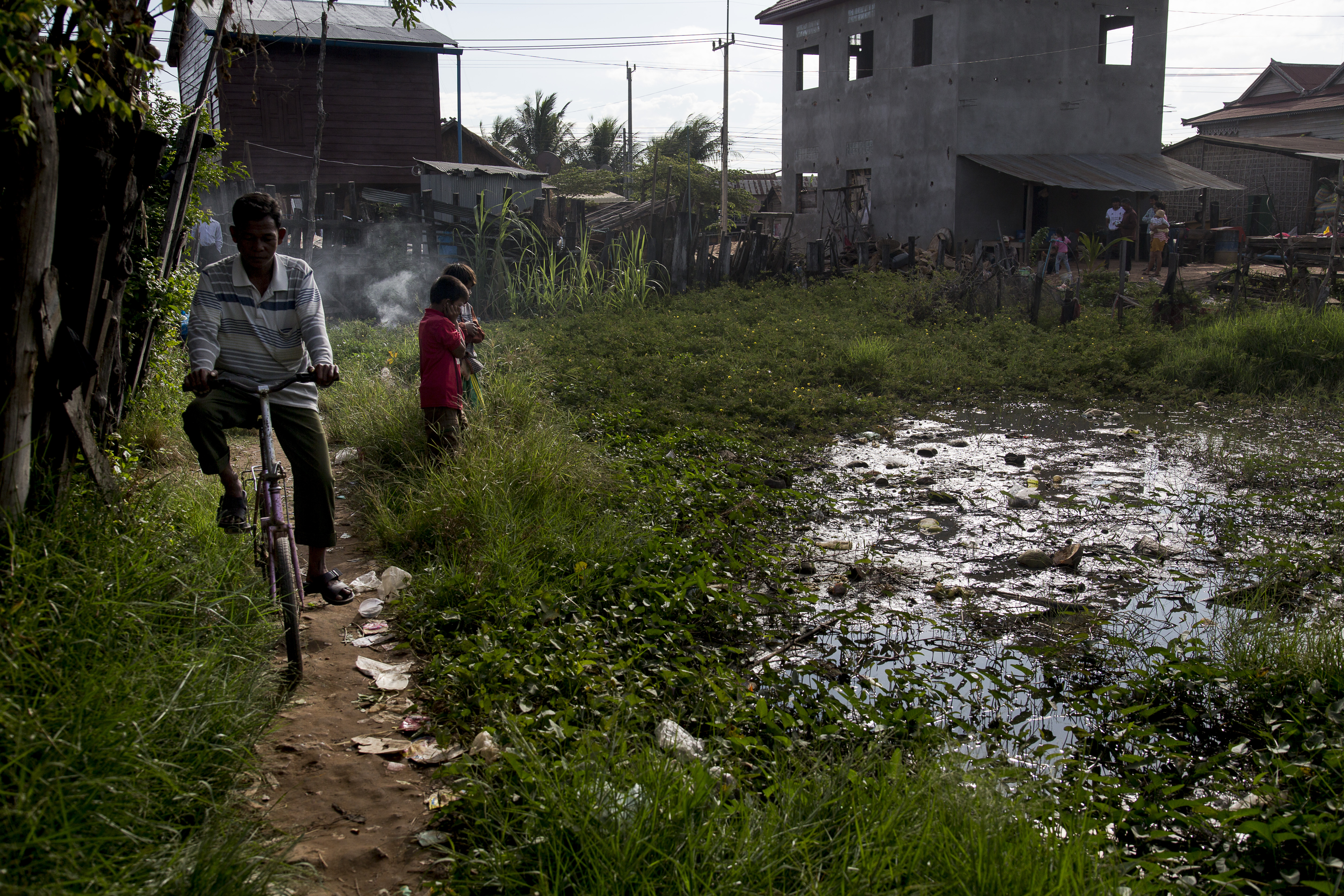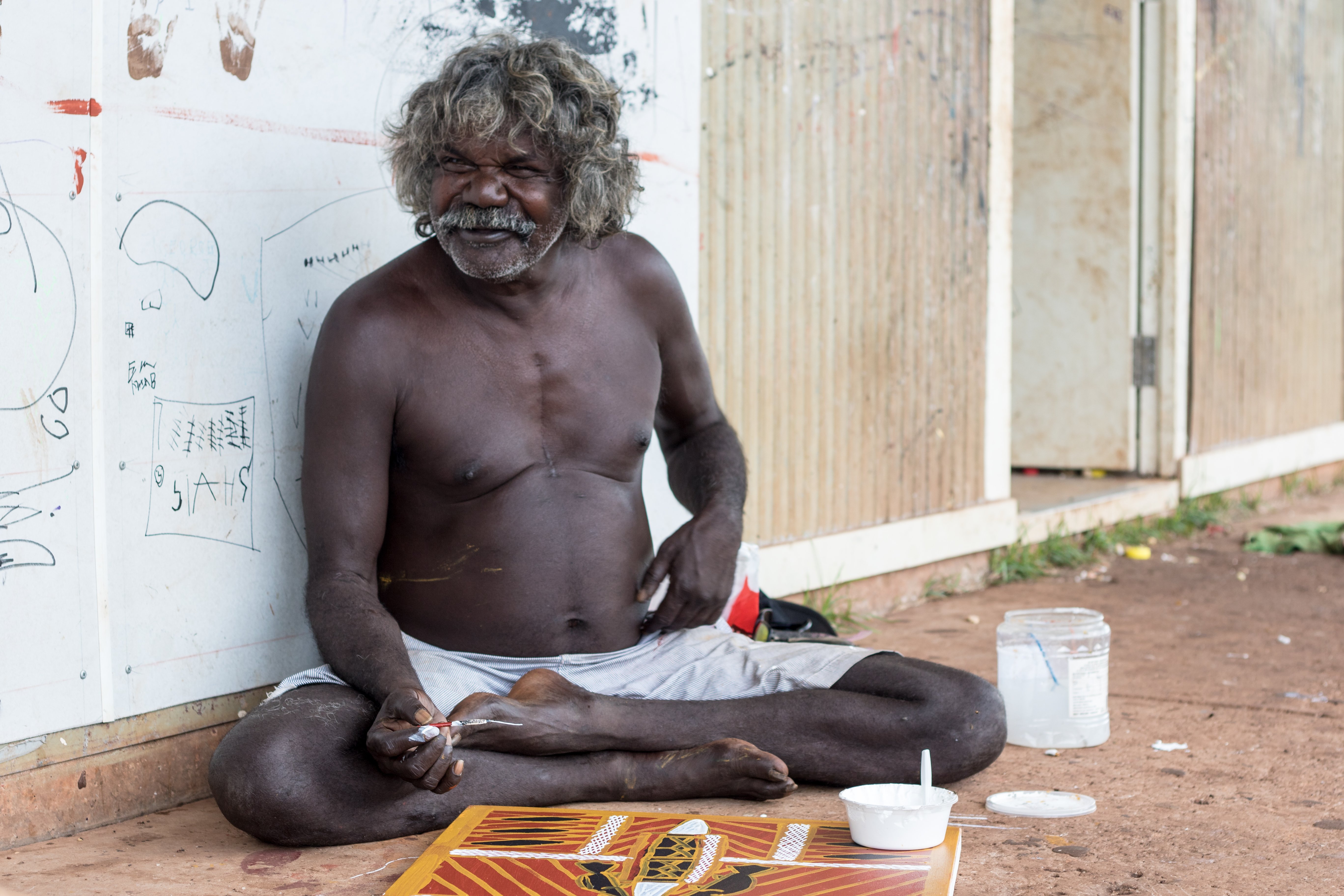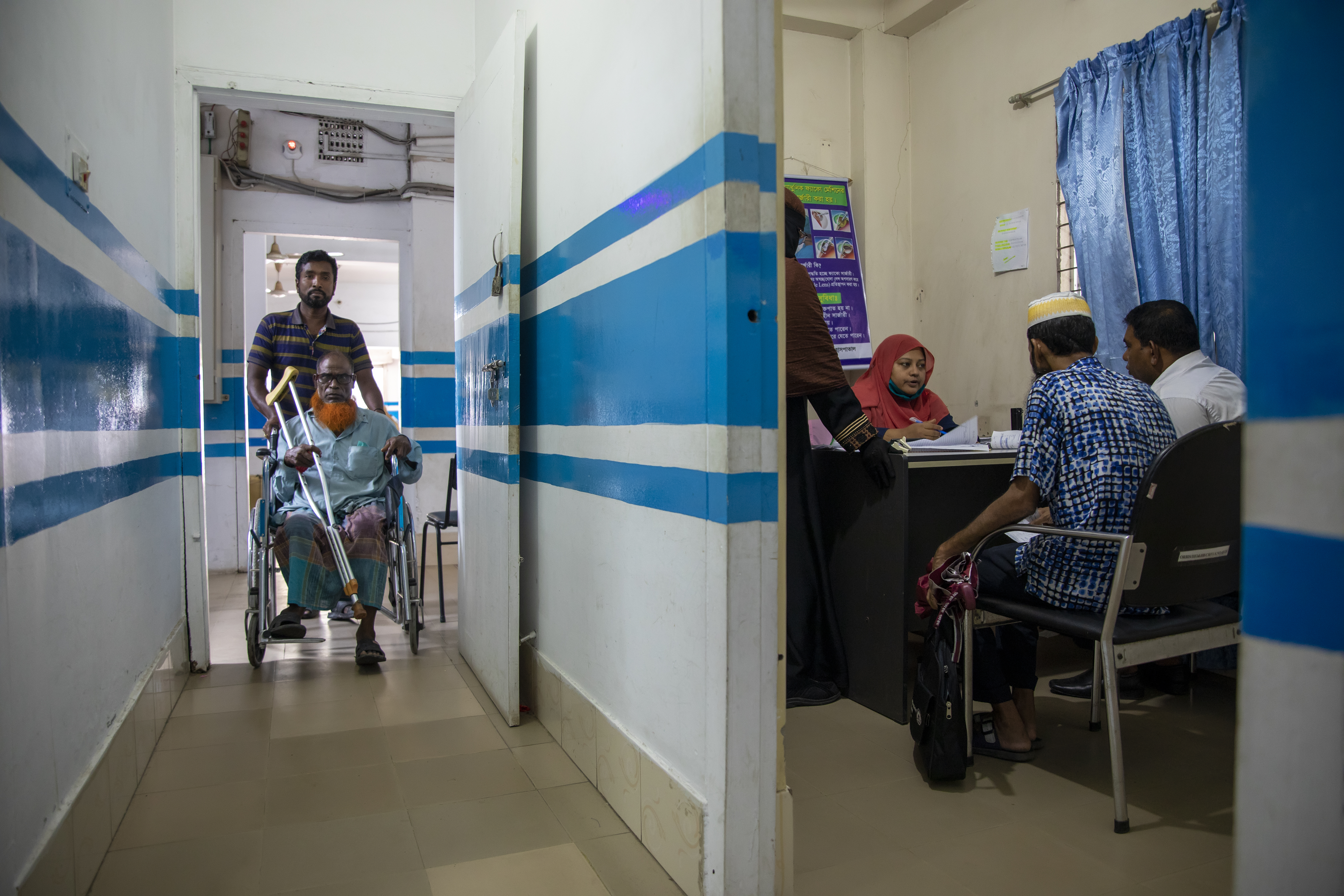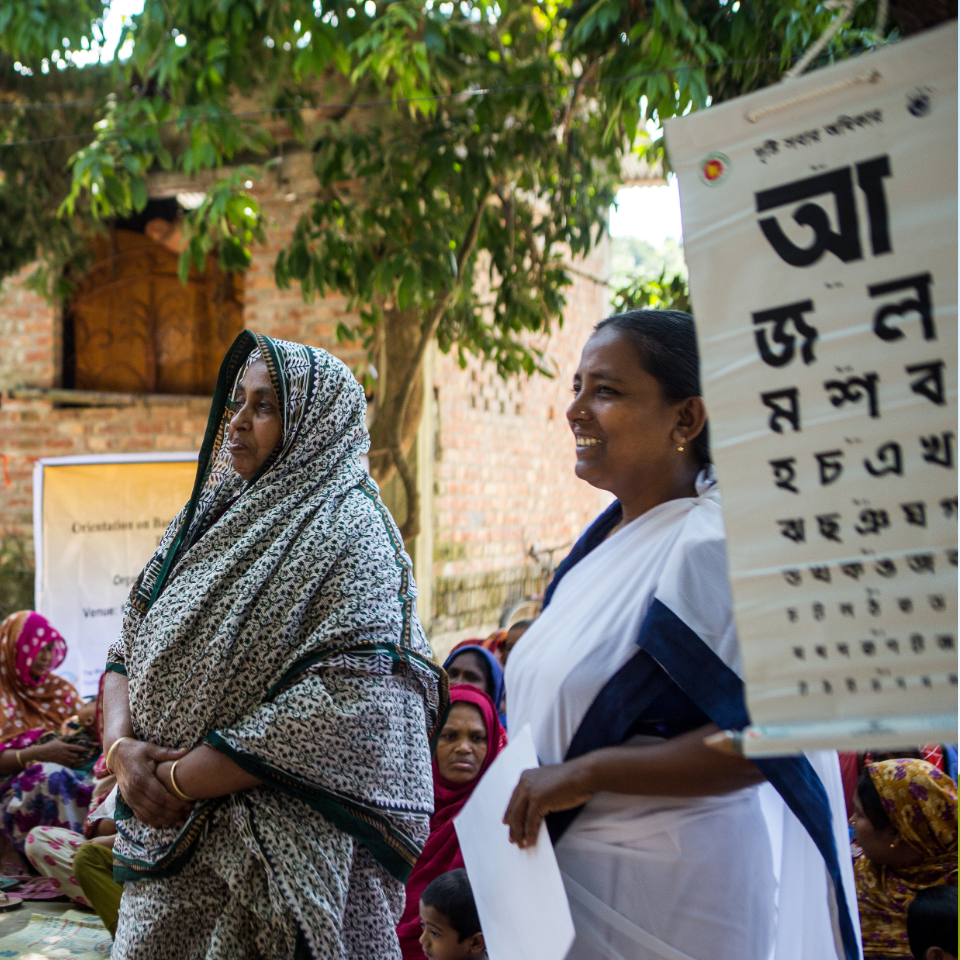All too often these groups are women, older people, displaced peoples, people living with a disability and people affected by income inequality. Health equity and inclusion is at the heart of The Foundation’s sight-saving work.
There are many layers of marginalization and inequity that make it hard, if not impossible, for people to access the eye care they need. We are committed to helping restore sight to these disadvantaged groups.
One way we do this is through the adoption of an equity organizing framework called GAPSED+ which stands for Gender, Age, Place of Residence, Socio-economic Status, Ethnicity/ Indigeneity/Race, Disability, Plus.
This equity framework is used to guide and inform our programming approach to ensure that everyone has equitable access to eye health and that no one is left behind.
Without intervention, these vulnerable people’s future, livelihood and at times, their life is in jeopardy.
These are some of the biggest barriers impacting equity in eye health.
Why is blindness a gender issue?
People often say health conditions don’t discriminate. But that’s not true of blindness. Blindness is a gender issue. An estimated 32 million people in the world are blind and two thirds are women.
See more of the work we do around the world on our YouTube channel.
GAPSED+ framework
Gender
It is unacceptable that globally, 55% of the world's blind are women. Women also suffer from higher rates of vision impairment. Unfortunately, it doesn’t stop there—gender disparity also prevents women from accessing the eye health services they need at the same rates as men.
Most of the women facing avoidable blindness live in middle- to low-income countries, where they have limited, if any, access to health services. A range of factors prevents them from getting the help they need, including family responsibilities, financial dependence, restricted access to transportation, and limits on freedom of movement.
Ageing
Globally, 86% of people who are blind or visually impaired are 50 years old or over, with more than half over the age of 70. These groups are at a higher risk of developing many eye conditions.
Older people often believe that their vision loss is a part of the normal aging process and unavoidable—often not knowing that many eye conditions, like cataracts, can be treated. This means they’re less likely to seek out eye care services or ask their family members to take time off work to help them attend an eye clinic.
Place of residence
Where a person lives can prevent them from getting the eye care they need. Generally, people who live in lower-income countries suffer poorer eye health outcomes. Increasing rates of urbanization and inequality within urban areas are also areas of concern. Most eye health professionals work in cities, meaning people in rural and remote areas often miss out on treatment.

Socio-economic
Poverty, income, employment status, education level, and other socioeconomic factors also limit people from accessing and affording treatment for conditions that cause avoidable blindness and vision impairment. Eighty-nine percent of blind and visually impaired people live in low- and middle-income countries.
Ethnicity/Indigeneity
Blindness and vision loss have been shown to disproportionately impact Indigenous and Tribal Peoples worldwide.
Cultural attitudes and issues of racism and discrimination based on ethnicity all prevent people from accessing the eye care they need.

Disability
People with disabilities have the same health care needs as other people in the community; however, they often face widespread barriers in accessing health services.
Some of these barriers include a lack of awareness and understanding about disability, negative attitudes and discrimination, lack of accessibility, and a lack of participation in decisions that directly affect their lives.

Other factors that cause inequity in eye health
The Foundation acknowledges that other barriers exist and that multiple interacting barriers likely negatively affect equity in eye health services and outcomes.
Some of these factors include migrant status, religion, and displacement (refugees).
Our achievements and impact
As part of our sight-saving work, we aim to achieve gender equity and inclusion in all our operations and program work.
In 2023, we achieved the following outcomes:
- 54% of the eye operations and treatments performed were on women or girls
- 73% of surgeries to treat trachoma were on women or girls
- 51% of people treated with antibiotics for trachoma were women or girls
- 58% of teachers trained were women
- 54% of glasses distributed were to women or girls
